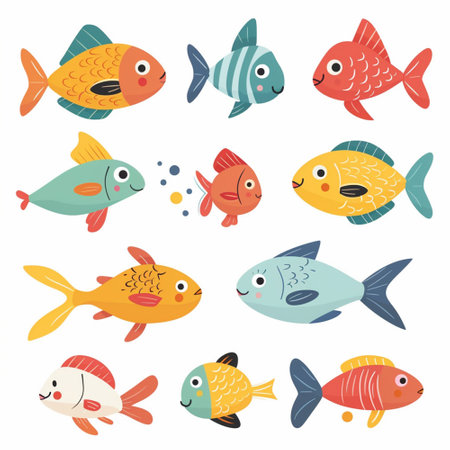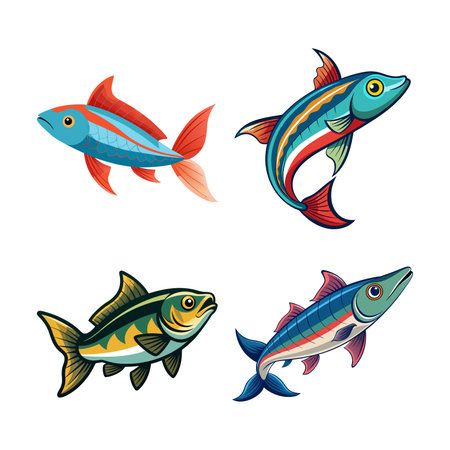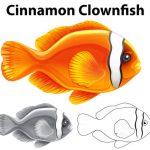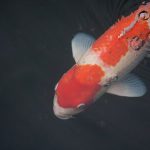1. Setting Up a Proper Quarantine Tank
Quarantining new fish is crucial to prevent the spread of diseases in your main aquarium. A well-prepared quarantine tank provides a safe space for observation, treatment, and acclimation before introducing new fish to your main tank.
Tank Size and Setup
The size of your quarantine tank depends on the number and size of the fish you plan to quarantine. Generally, a 10 to 20-gallon tank works well for most freshwater and saltwater fish.
| Fish Size | Recommended Tank Size |
|---|---|
| Small (1-3 inches) | 10 gallons |
| Medium (4-6 inches) | 15-20 gallons |
| Large (7+ inches) | 30+ gallons |
Filtration System
A sponge filter or a hang-on-back filter with biological media is ideal for a quarantine tank. Avoid using carbon filters if you plan to medicate the fish, as activated carbon can remove medications from the water.
Water Parameters
The water in your quarantine tank should closely match the parameters of your main tank to reduce stress on the new fish. Regularly test the water for ammonia, nitrites, nitrates, pH, and temperature.
| Parameter | Ideal Range |
|---|---|
| Temperature | 75-80°F (24-27°C) |
| P.H. | 6.5-7.5 (varies by species) |
| Nitrites & Ammonia | < 0 ppm |
| Nitrates | < 20 ppm |
Aquarium Decorations and Hiding Spots
A bare-bottom tank is best for easy cleaning, but adding PVC pipes or artificial plants provides hiding spots that help reduce stress in quarantined fish.
The Importance of Daily Monitoring
Disease symptoms may not appear immediately, so daily observation is key. Check for unusual behavior, loss of appetite, discoloration, or other signs of illness.
A properly set up quarantine tank helps ensure your new fish stay healthy and disease-free before joining your main aquarium. In the next section, well cover how to acclimate your fish to their temporary home.
2. Acclimating New Fish Correctly
Introducing new fish to a quarantine tank requires patience and proper acclimation techniques. Sudden changes in water parameters can cause stress or even shock, which may lead to illness. By following the right steps, you can help your fish adjust smoothly to their temporary home.
Why Proper Acclimation Matters
Fish are highly sensitive to changes in temperature, pH, and other water conditions. When transferred abruptly, they may experience stress, making them more vulnerable to diseases. A gradual acclimation process ensures they adapt comfortably, reducing health risks.
Step-by-Step Acclimation Process
1. Floating Method
This method helps equalize the temperature of the transport bag with the quarantine tank.
- Turn off the quarantine tank lights to reduce stress.
- Float the sealed bag containing the new fish in the quarantine tank for 15-30 minutes.
- This allows the water inside the bag to gradually match the tank’s temperature.
2. Drip Acclimation Method
The drip method is ideal for sensitive species that need slow adaptation to new water parameters.
- Place the fish (still in its transport water) into a clean container.
- Use airline tubing to create a slow siphon from the quarantine tank into the container.
- Adjust the drip rate to about 2-4 drops per second.
- Allow this process to continue for 30-60 minutes until most of the water has been replaced with quarantine tank water.
- Cautiously transfer the fish into the quarantine tank using a net (avoid adding transport water).
Comparison of Acclimation Methods
| Method | Time Required | Best For | Risk Level |
|---|---|---|---|
| Floating Method | 15-30 minutes | Hardy fish species | Low |
| Drip Acclimation | 30-60 minutes | Sensitive or delicate species | Very Low |
Additional Tips for a Smooth Transition
- Avoid feeding new fish immediately after introduction; give them time to settle first.
- Dimming lights during acclimation reduces stress levels.
- If possible, use a separate net for each batch of new fish to prevent cross-contamination.
- Mild aeration in the acclimation container can help maintain oxygen levels.
A well-executed acclimation process sets your new fish up for success in their quarantine environment. Taking these precautions helps minimize stress and prevents potential health issues down the line.

3. Monitoring for Signs of Illness
Once your new fish are in quarantine, it’s crucial to monitor them daily for any signs of illness. Early detection can prevent diseases from spreading to your main tank and give your fish a better chance of recovery.
Common Symptoms of Fish Diseases
Fish can exhibit various signs when they are unwell. Here are some common symptoms to watch out for:
| Symptom | Possible Cause |
|---|---|
| White spots on body or fins | Ich (Ichthyophthirius multifiliis) |
| Frayed or discolored fins | Fin rot (Bacterial or fungal infection) |
| Lethargy or hiding excessively | Bacterial infection, stress, or poor water quality |
| Trouble swimming or floating abnormally | Swim bladder disease or parasitic infection |
| Cotton-like patches on the body | Fungal infection |
| Lack of appetite | Disease, stress, or poor water conditions |
How to Perform Daily Health Checks
A simple daily routine can help you spot issues before they become severe. Follow these steps:
- Observe Behavior: Watch how the fish swim, eat, and interact with their environment.
- Check for Physical Changes: Look closely for any discoloration, spots, bloating, or damaged fins.
- Monitor Breathing: Rapid gill movement could indicate stress, low oxygen levels, or disease.
- Eensure Water Quality: Test ammonia, nitrite, nitrate, and pH levels regularly.
- Nourish Properly: Make sure your fish are eating well and not showing signs of food avoidance.
When to Take Action
If you notice any concerning symptoms, take action immediately:
- If only one fish is affected: Separate it into a hospital tank to prevent spreading disease.
- If multiple fish show symptoms: Assess water quality first, as poor conditions can cause widespread issues.
- If symptoms worsen: Consider using appropriate medications based on the suspected illness.
- If unsure about treatment:
The key to successful quarantining is vigilance. By carefully monitoring your fish every day and taking prompt action when necessary, you can ensure they stay healthy before introducing them into your main aquarium.
4. Treating Potential Health Issues
When quarantining new fish, it’s important to proactively address potential health concerns. Even if your fish look healthy, they might carry parasites, bacterial infections, or fungal diseases that could spread to your main tank. Using preventative treatments can help ensure your new fish are truly disease-free before introducing them to their permanent home.
Common Health Concerns in New Fish
Newly acquired fish can carry a variety of illnesses. Below are some of the most common health issues to watch for during quarantine:
- External Parasites: Ich (white spot disease), flukes, and velvet are common parasites that affect fish.
- Bacterial Infections: Fin rot, columnaris (cotton wool disease), and ulcers may develop due to stress or poor water conditions.
- Fungal Infections: White cotton-like growths on the body or fins often indicate a fungal issue.
- Internal Parasites: Tapeworms, nematodes, and protozoans can cause weight loss and digestive issues.
Preventative Treatments and Medications
Using the right medications can help eliminate hidden illnesses before they become a bigger problem. Below is a guide to commonly used treatments for quarantined fish:
| Health Concern | Recommended Treatment | Usage Instructions |
|---|---|---|
| External Parasites (Ich, Flukes, Velvet) | Copper-based treatments (e.g., CopperSafe) or formalin-based medications | Follow dosage instructions carefully; remove carbon from the filter before treatment. |
| Bacterial Infections (Fin Rot, Columnaris) | Antibiotics like Kanamycin, Maracyn 2, or Furan-2 | Treat in a separate hospital tank; monitor closely for improvements. |
| Fungal Infections | Methylene Blue or antifungal medications like Pimafix | Add to quarantine tank as directed; improve water quality to prevent further outbreaks. |
| Internal Parasites (Tapeworms, Nematodes) | Praziquantel (e.g., PraziPro) or Levamisole | Add to food or directly into the water; repeat as recommended by product guidelines. |
How to Administer Treatments Safely
If you decide to use medication during quarantine, follow these best practices:
- Read Labels Carefully: Always follow dosage instructions provided with the medication.
- Avoid Overmedication: Using too many medications at once can stress fish and harm beneficial bacteria.
- Monitor Water Quality: Some medications can affect ammonia and oxygen levels—test water parameters frequently.
- Observe Your Fish Daily: Look for signs of improvement or worsening symptoms and adjust treatment as needed.
- Perform Water Changes: Regular partial water changes help remove excess medication and maintain good water quality.
When to Stop Treatment
If your fish show no signs of illness after two weeks of quarantine and respond well to any preventive treatments given, you can stop medicating. Continue observing them for at least another week before transferring them to the main tank.
A proactive approach to treating potential health issues ensures that your new fish stay healthy while preventing diseases from spreading in your aquarium. By following these guidelines, you’ll create a safer environment for all your aquatic pets.
5. Determining When to Move Fish to the Main Tank
Knowing when to transfer your new fish from the quarantine tank to your main aquarium is crucial in preventing disease outbreaks and ensuring a smooth transition. The quarantine period typically lasts 2 to 4 weeks, but several factors determine the right time for the move.
How Long Should You Quarantine New Fish?
The recommended quarantine duration depends on the fishs health status and any signs of illness that may appear during observation. Below is a general guideline:
| Quarantine Duration | Condition |
|---|---|
| At least 2 weeks | No visible illness, fish eating and behaving normally |
| 3-4 weeks | Mild stress symptoms observed but resolved with treatment |
| Extended quarantine (4+ weeks) | Disease symptoms present; requires treatment and full recovery |
Steps Before Introducing Fish to the Main Tank
1. Observe Behavior and Health
Your fish should be active, eating well, and showing no signs of stress or disease before transferring them to the main tank.
2. Conduct a Final Health Check
Look for any unusual spots, fin damage, or abnormal swimming patterns. If anything seems off, extend the quarantine period.
3. Perform Water Testing
The water parameters in both tanks should match as closely as possible. Test for ammonia, nitrites, nitrates, and pH levels.
4. Acclimate Your Fish Gradually
Abrupt changes in environment can cause stress. Use a slow acclimation method by gradually mixing small amounts of main tank water into the quarantine tank over an hour before transfer.
5. Introduce Fish at the Right Time
Add new fish when lights are dimmed or off to reduce stress from existing tank mates.
Monitoring After Transfer
The first few days after introducing your fish to the main tank are crucial. Keep an eye on their behavior and interactions with other fish. If you notice aggression or signs of distress, be prepared to intervene.


